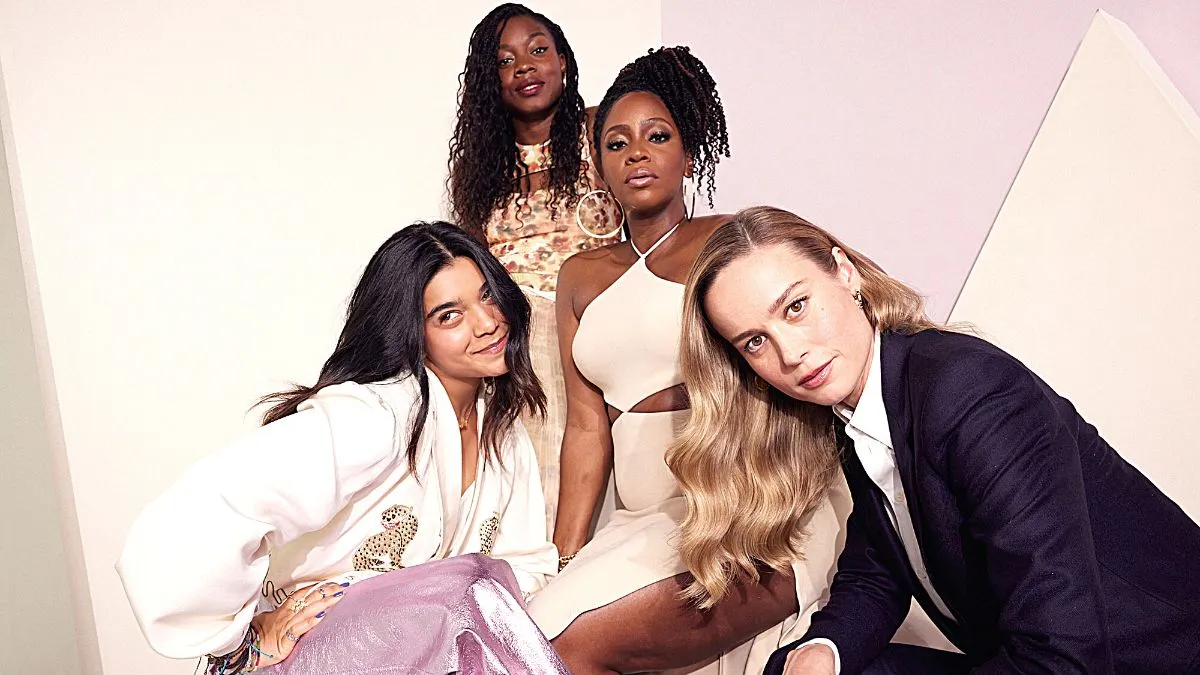
Advertisement
The latest addition to the Marvel Cinematic Universe, aptly titled The Marvels, has generated varied opinions and discussions.
For some, the film stands as an enjoyable, heartfelt superhero classic, acknowledging its flaws. Conversely, there’s a faction that seems to harbor a particular disdain for the movie, an attitude seemingly tied to its female-focused narrative and voice. The phrase “Go woke, go broke” quickly emerged to explain the film’s dismal box office performance, disregarding broader factors like an actor’s strike, an erratic marketing campaign, and a general waning interest in Marvel properties.
Interestingly, the film’s femininity emerges as one of its strongest aspects. While superhero movies traditionally prioritize “hero vs. villain” action, engaging fight sequences, and impressive visual effects (or used to), they also provide a platform for compelling character-driven narratives when executed well.
Despite its frenetic pace and occasionally choppy editing, The Marvels encapsulates a relationship dynamic unprecedented in superhero filmmaking. Director and co-writer Nia DaCosta infuses generosity and affection into her portrayal of the three leading ladies, offering a refreshing, new, and optimistic perspective. Female solidarity and camaraderie form the undeniable driving force of the narrative, as the intricate histories and aspirations intertwine and evolve among Carol, Monica, and Kamala.
DaCosta adeptly navigates Carol and Monica’s experiences of abandonment and unmet expectations while incorporating Kamala’s idealized perspective of her idol, Captain Marvel. Her depiction humanizes these heroes, allowing space for connection and emotion within the film’s bustling rhythm. Carol grapples with the fallout of her actions, isolating herself as a form of self-imposed penance, whereas Monica contends with the loss of her mother and the disappearance of her aunt. Simultaneously, Kamala’s lofty dreams collide with the harsh realities of Captain Marvel’s adventures—more sacrifice and tough decisions than glitz and glamour.
One standout sequence highlights the trio setting aside their differences to understand their interconnected powers and devise a plan. They lounge, eat cereal, engage in playful banter, and work together—a moment that humanizes these characters, presenting them as genuine individuals rather than mere symbols of a predetermined media portrayal.
While certain narrative threads remain unresolved and not every resolution satisfies, The Marvels surprisingly showcases vulnerability and empathy. These qualities, inseparable from DaCosta’s female sensitivity and her portrayal of Carol, Kamala, and Monica, might have been overlooked by some. Imperfections that illuminate these characters are occasionally misconstrued as “boring” or “annoying.” Nonetheless, the film marks a shift where female superheroes are portrayed beyond the confines of sex appeal and confidence. Nia DaCosta’s direction deserves appreciation for this evolution.
